Claudia Andujar: The Yanomami Struggle – Barbican, London
A review of Claudia Andujar: The Yanomami Struggle, a photography retrospective with a political and indigenous rights agenda. Beautiful and haunting, Andujar’s work is more important now than it has been in several decades.
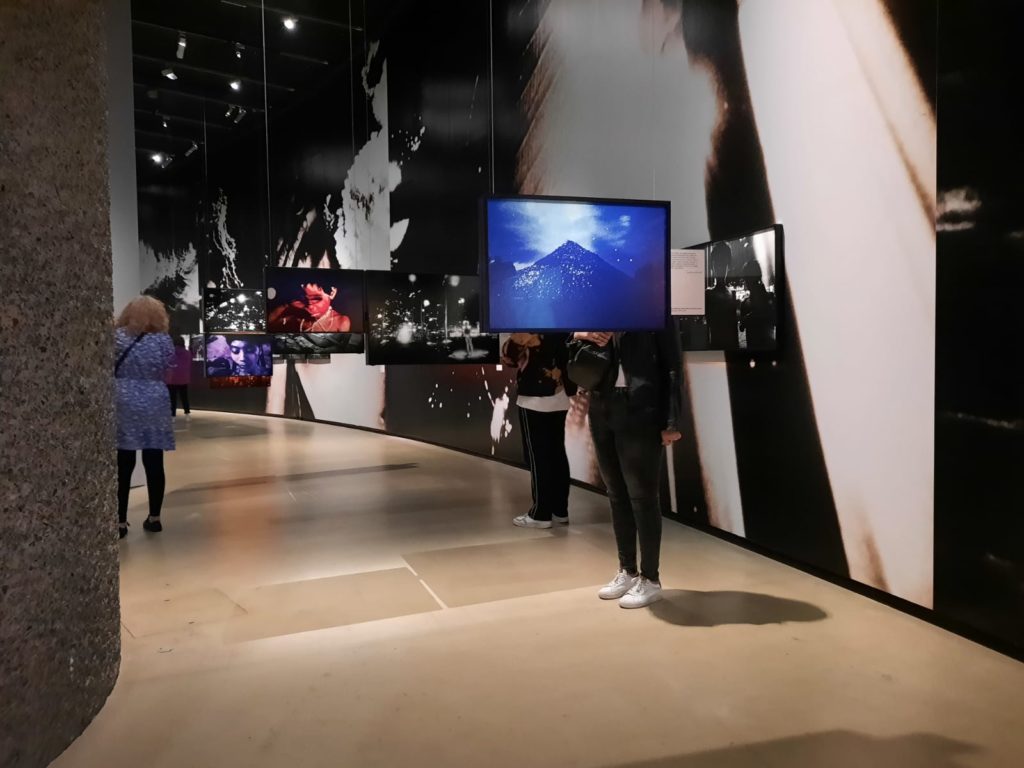
Who Are The Yanomami?
“Ah yes, the Yanomami” said my other half when I came home after seeing this exhibition. “Everyone studies them in Geography, or at least they used to. Very famous.” Well the Yanomami were news to me, and maybe are to you as well, so let’s start there!
The Yanomami are an indigenous group living mostly in Northern Brazil. And to a lesser extent over the border in Venezuela. Many communities make up the Yanomami, some of whom are in greater or lesser contact with the outside world. Overall, however, they are considered to be ‘isolated’. Their way of life centres on communal living; shamanistic practice; and a huge knowledge of local plant and animal life. They live in demarcated protected areas, or, should I say, “protected”. The demarcation occurred in 1992 in response to the encroachment of gold mining activity (itself a response to new roads opening up access to Yanomami territory). But the future of this protected status looks less certain today, and illegal mining and other activities continue. This exposes the Yanomami to violence, exploitation, and disease.
The subtitle “The Yanomami Struggle” sounds about right, then. But the beauty of this exhibition is that it tells the story of this struggle while introducing us to the Yanomami people, their customs and lifestyle, through the lens of the work of Claudia Andujar. So perhaps the next thing we should do is learn about her!
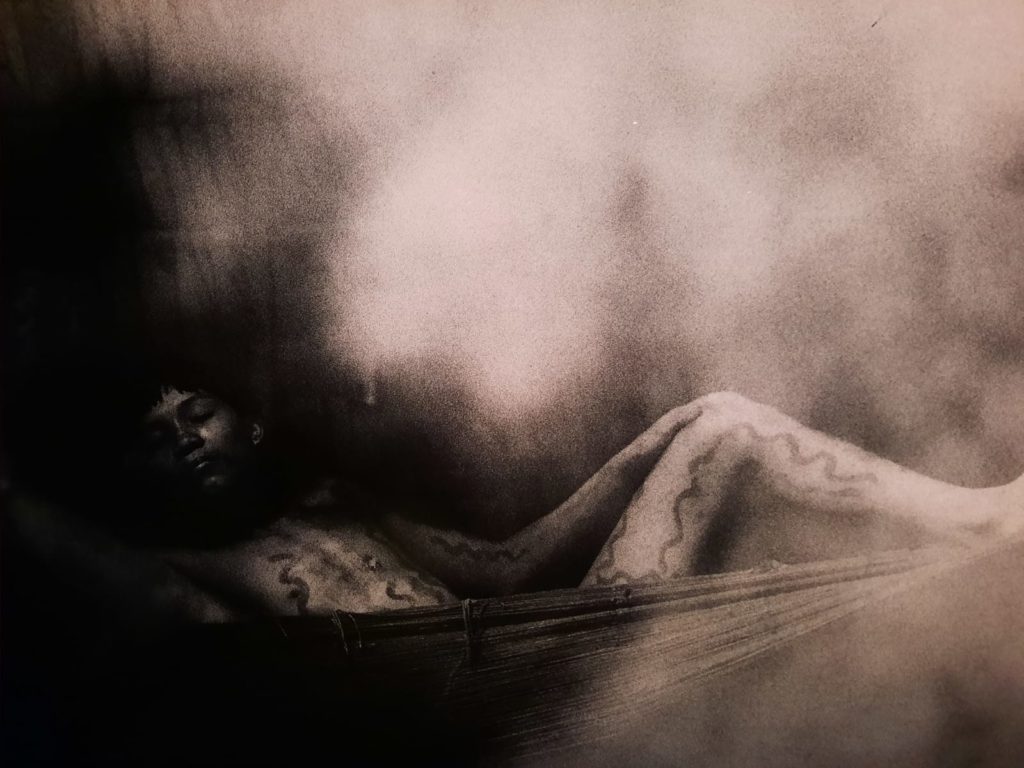
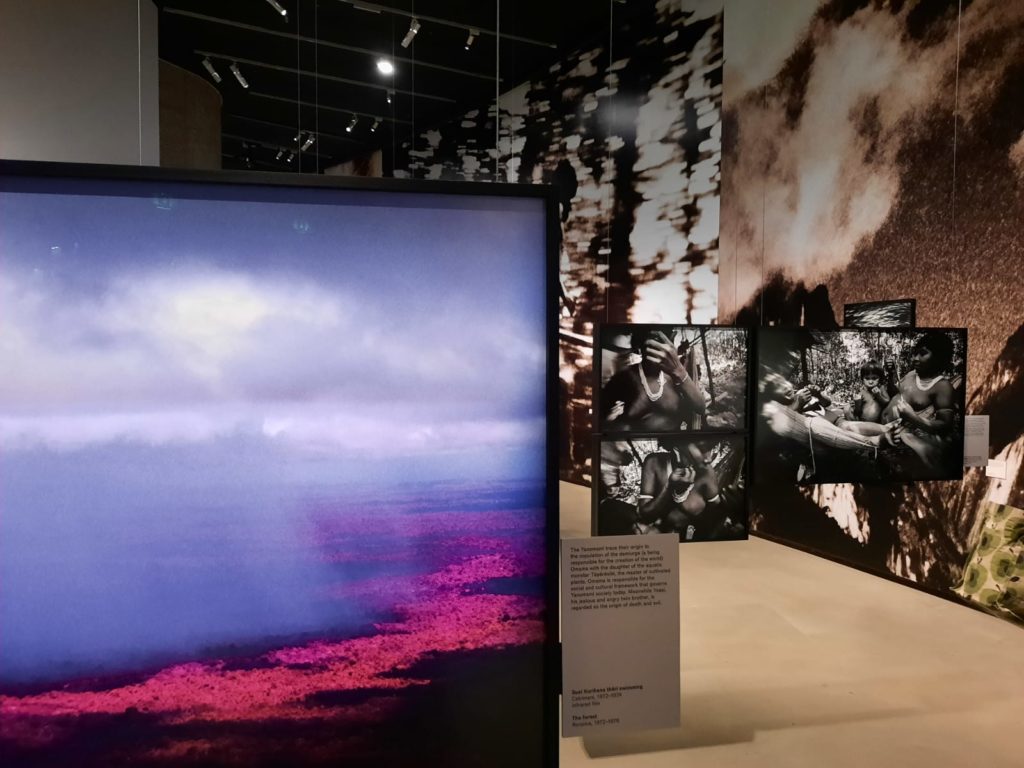
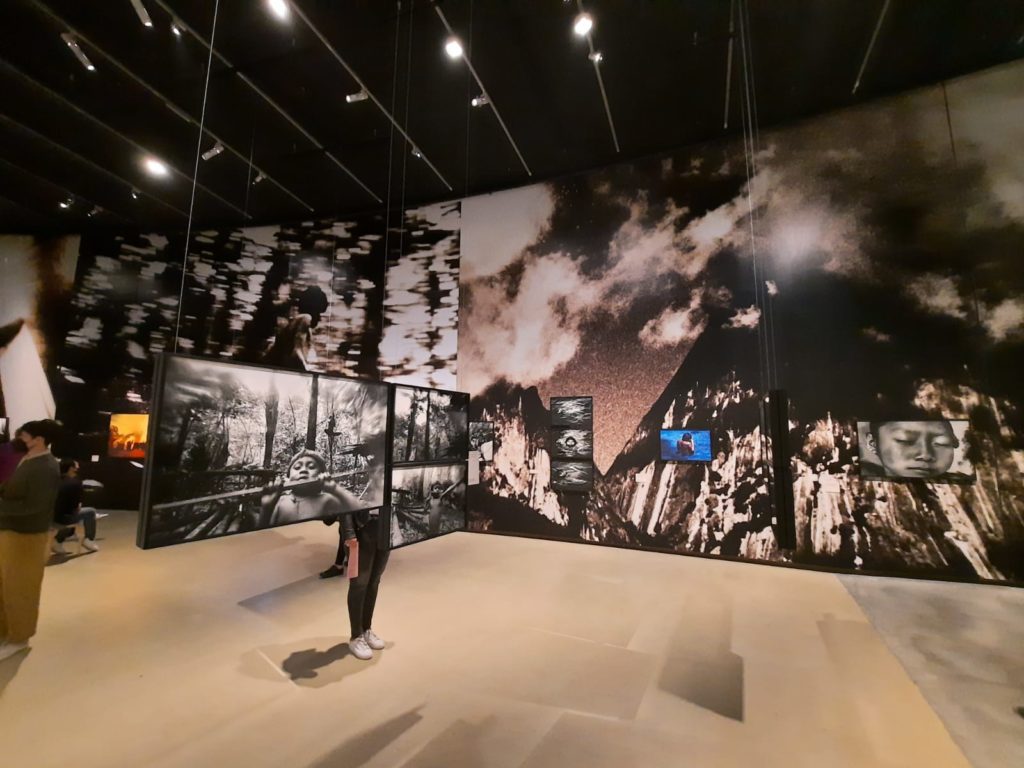
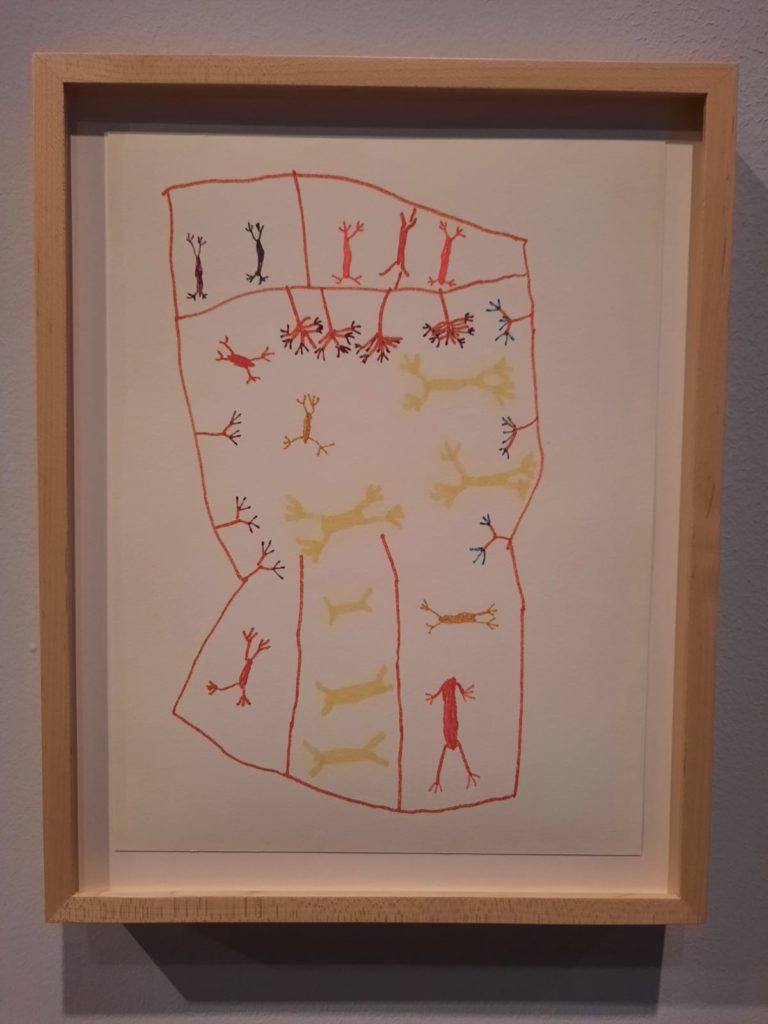
Claudia Andujar
The story of how Claudia Andujar ended up in Brazil amongst the Yanomami reads like a summary of the upheavals of the 20th Century. Claudine Haas was born in Neuchâtel, Switzerland, to a Swiss mother and Hungarian Jewish father. She grew up in Transylvania which was then Hungarian, but is now Romanian. Her father was murdered during the Holocaust (along with her paternal family). Thankfully, her mother was able to get her to safety in Switzerland. After the war she studied in New York City, and there met and married a Spanish Refugee, Julio Andujar. After divorcing Andujar (but keeping his name), she settled in Brazil in 1956. Aged 90, Andujar still lives and works in São Paolo today.
It was in 1971 that Andujar first met the Yanomami, on assignment for the Brazilian magazine Realidade. Fascinated, she obtained a Guggenheim fellowship in order to return and develop an in-depth photographic project. Andujar’s work has never been purely documentary, however. Rather, it is experimental, and looks to capture experiences and feelings rather than to ‘other’ the Yanomami with a purely Western gaze. To achieve this, Andujar has used vaseline on lenses; infrared; studied low light photography techniques; rephotographed old images with coloured filters or other effects… and the list goes on.
This exhibition brings together several series amongst decades of work that Andujar has done amongst the Yanomami. There is also a ‘drawing project’ where members of the community used paper and felt tip pens to tell their own stories. The result is very immersive and also tells the story, for better or worse, of how things have developed over the past few decades.
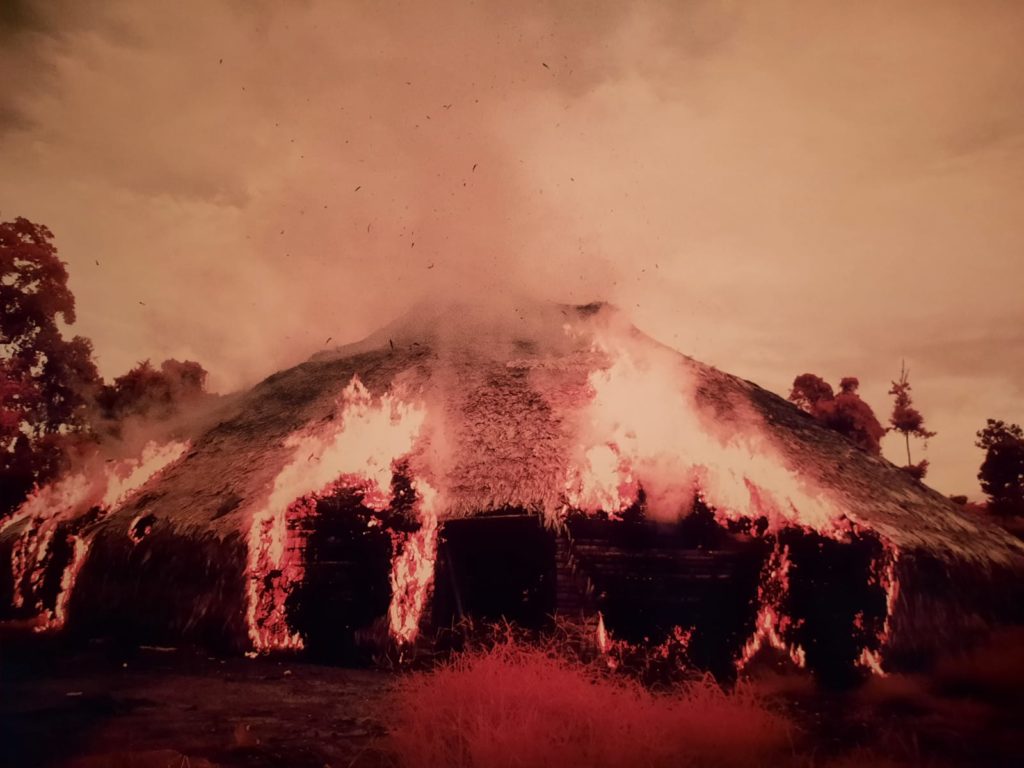
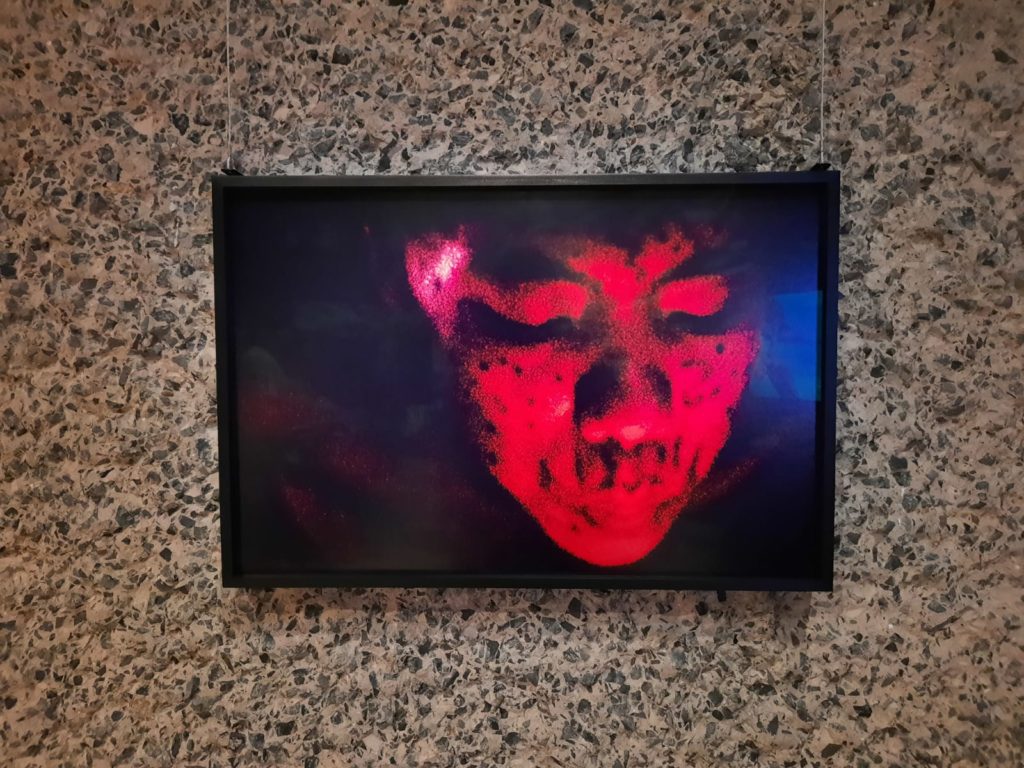
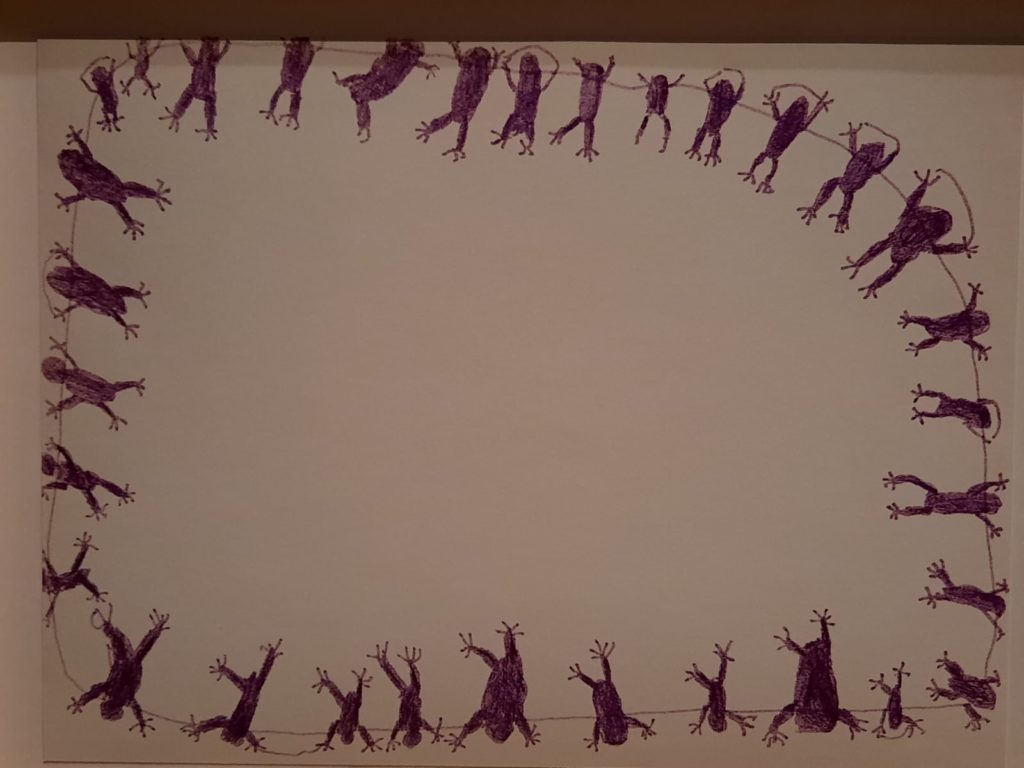
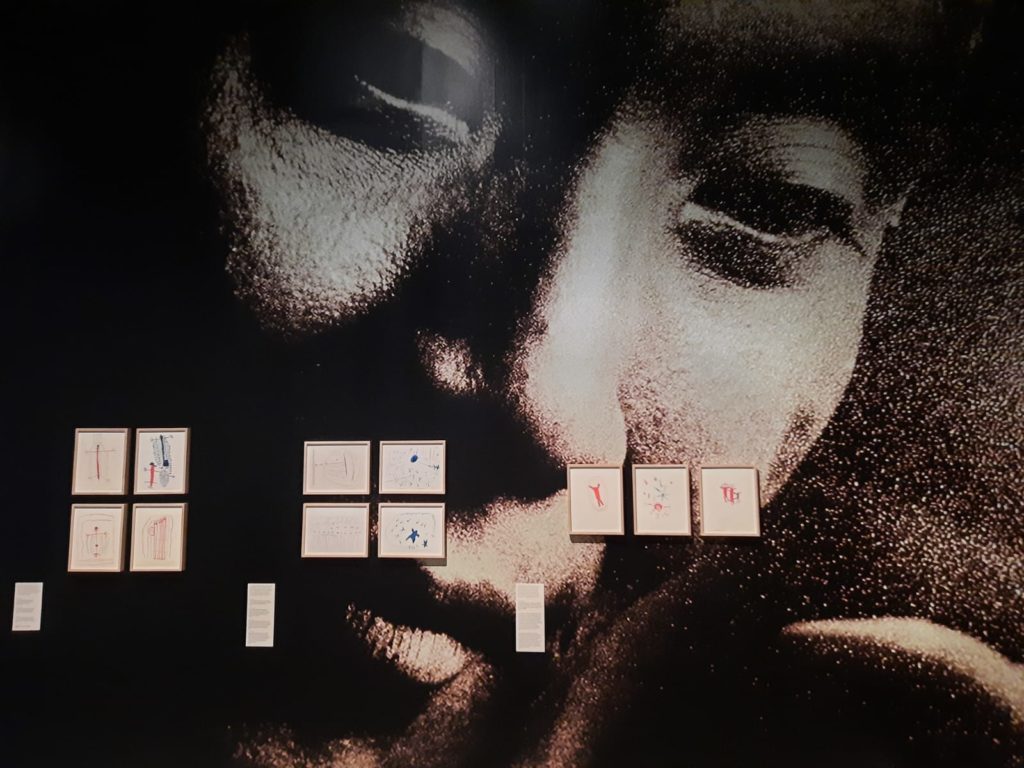
Claudia Andujar: The Yanomami Struggle
You may be familiar with the Barbican Curve space from Toyin Ojih Odutola: A Countervailing Theory. It is, as the name would suggest, a large curved space inside the Barbican. This exhibition continues downstairs in a cinema space, with the audio-visual installation Genocide of the Yanomami: Death of Brazil (1989-2018).
I’ve mentioned already that this exhibition has a good narrative arc. It starts by situating the visitor with some of Andujar’s earlier series of works and some background information. Who are the Yanomami? Where in Brazil are we talking about? How did she end up there? These series are quite joyful – the images celebrate family bonds, moments of rest or celebration, and the connection between photographer and subject. As you can see in the images above the works hang at eye level, a different image on each side. Massive blown up details take up the full length of the walls. It is very immersive. I would almost go so far as to say it subverts our expectations of what an exhibition looks like in order to help us as visitors to meet a different culture with an open mind.
The two halves of the Curve space are bisected by a documentary video. This is an interview with Andujar in her São Paolo apartment and on a flight to the Yanomami territory. After this point, the story takes a turn. Andujar’s photographic series focus more on contact with outsiders, and its consequences. We see Yanomami drawn to the sites of incursions, including new roads. We see Yanomami wearing numbers, part of a vaccination drive at a time when approximately 20% of their community were lost to disease. Having been immersed in Yanomami life in the first half, this feels traumatic and uncomfortable, as is most likely the intention.
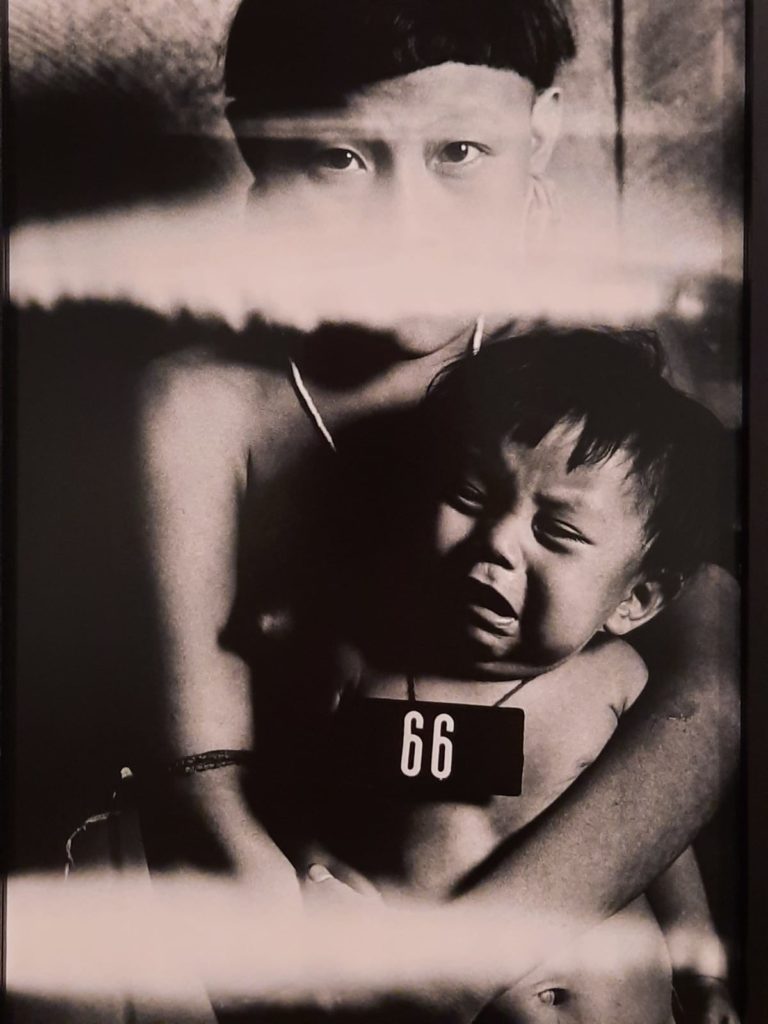
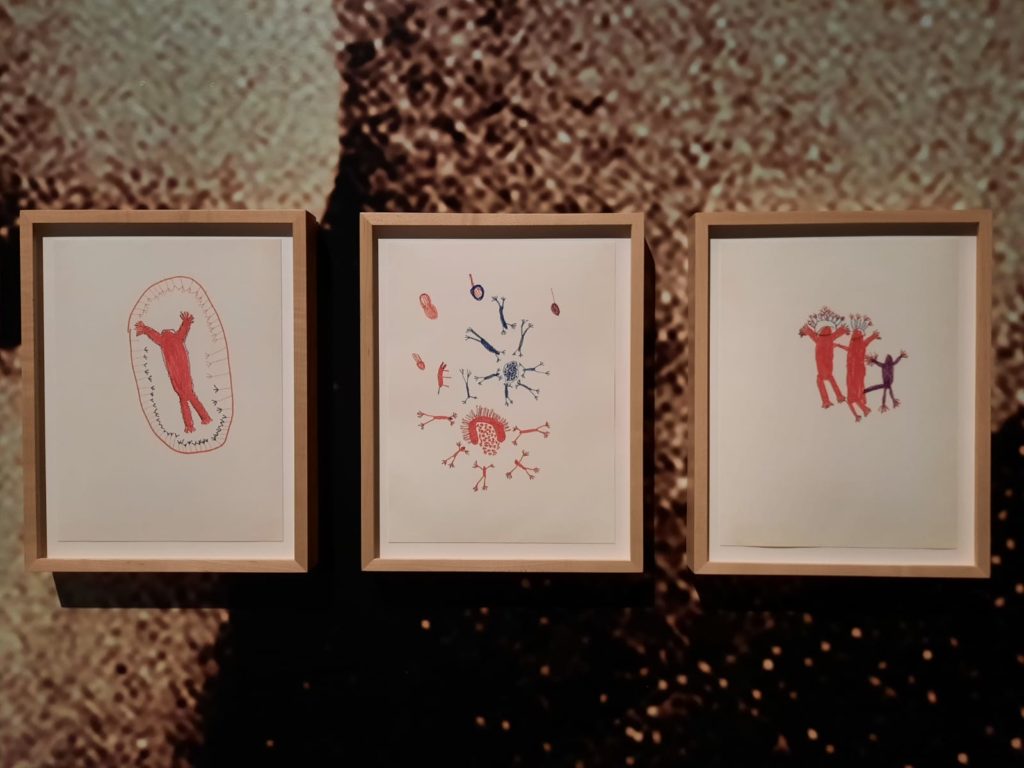
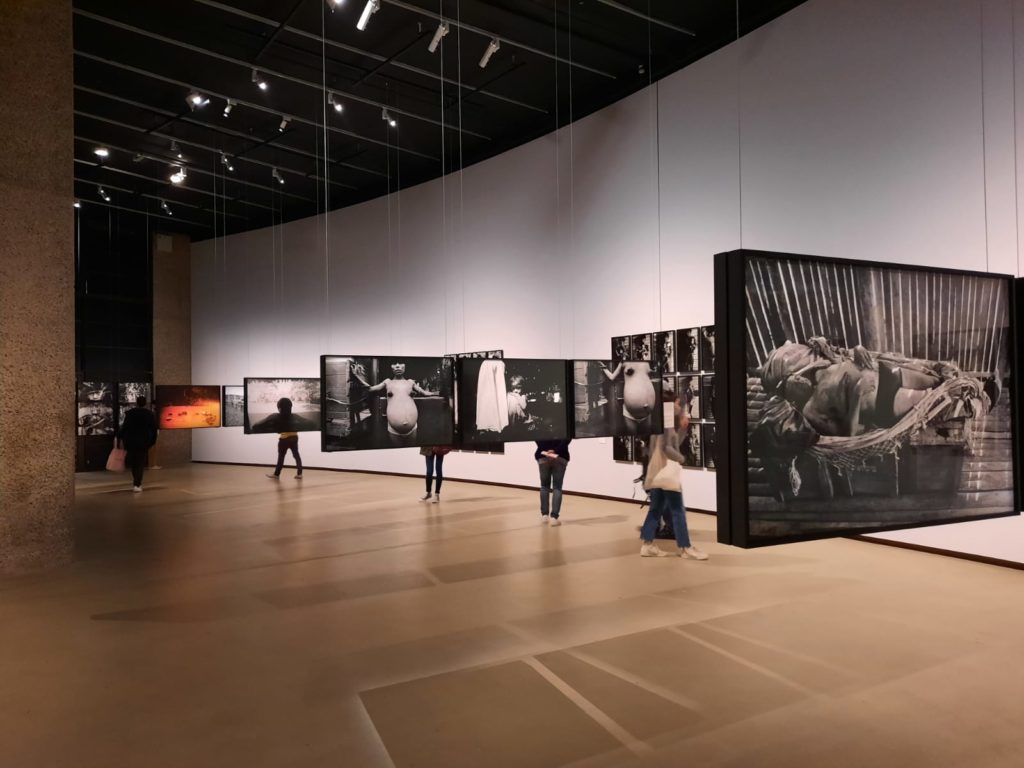
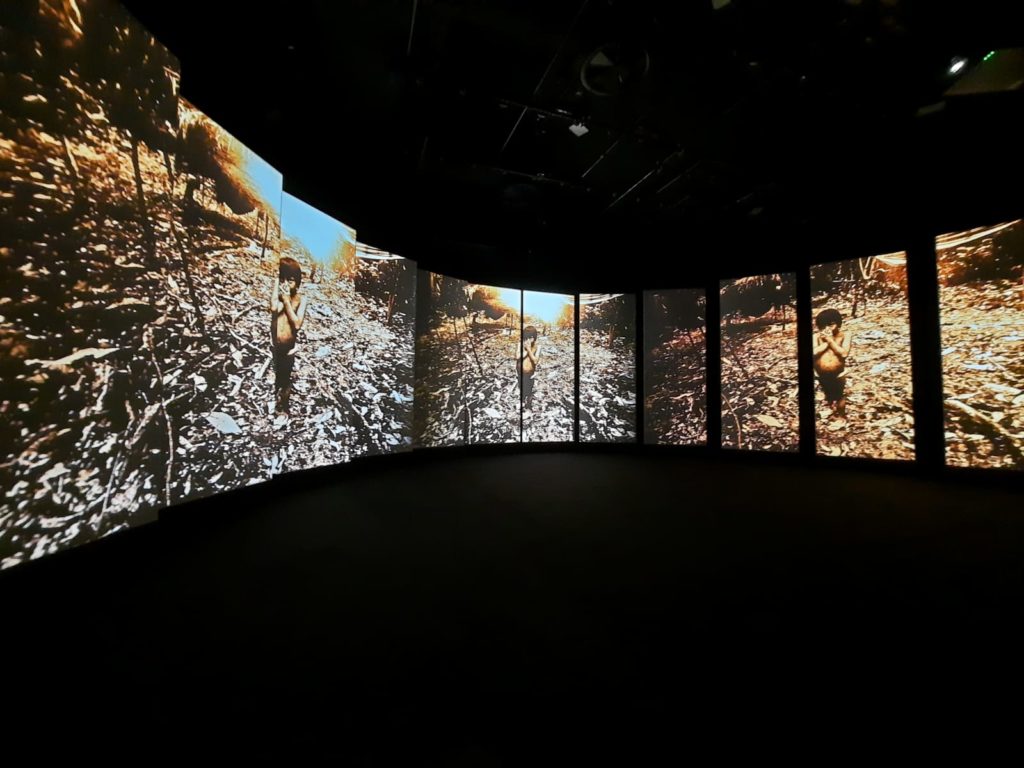
Final Thoughts
The final section, Genocide of the Yanomami: Death of Brazil (1989-2018), is a recreation of an earlier audio-visual installation/film. Andujar’s images project across multiple screens, to music. The narrative arc is the same as the exhibition itself, showing traditions breaking down as we fail to protect the Yanomami way of life. It is sobering, and brings the purpose of the exhibition into focus.
The Yanomami normally do not like to be photographed. They are concerned that, if after death an image of an individual remains, they will not be free to move into the afterlife. However, part of Andujar’s work with the Yanomami over the years has also been in advocacy – she has supported their cause herself and through the CCPY (Pro Yanomami Commission), and also empowered community leaders. The Yanomami see the power of Andujar’s work reaching a wide audience as more important than concerns around images, and are therefore supportive. Andujar and community leader Davi Kopenawa were even due to tour Europe with the exhibition. Covid sadly prevented this wonderful opportunity, but the strong activist intention behind the exhibition still resonates.
I urge you to see this exhibition if you can. It is a thoughtful and powerful introduction to the struggle of indigenous groups in many parts of the world, through the eyes of the Yanomami. Andujar’s photography is beautiful, and her subjects eloquent in describing themselves and their relationship to her. I may have missed out on the Yanomami in my high school days many years ago, but they will long stick with me now.
Salterton Arts Review’s rating: 4.5/5
Claudia Andujar: The Yanomami Struggle on until 29 August 2021
Find out what else there is to see in London – sign up below for our weekly newsletter:
If you see this after your page is loaded completely, leafletJS files are missing.

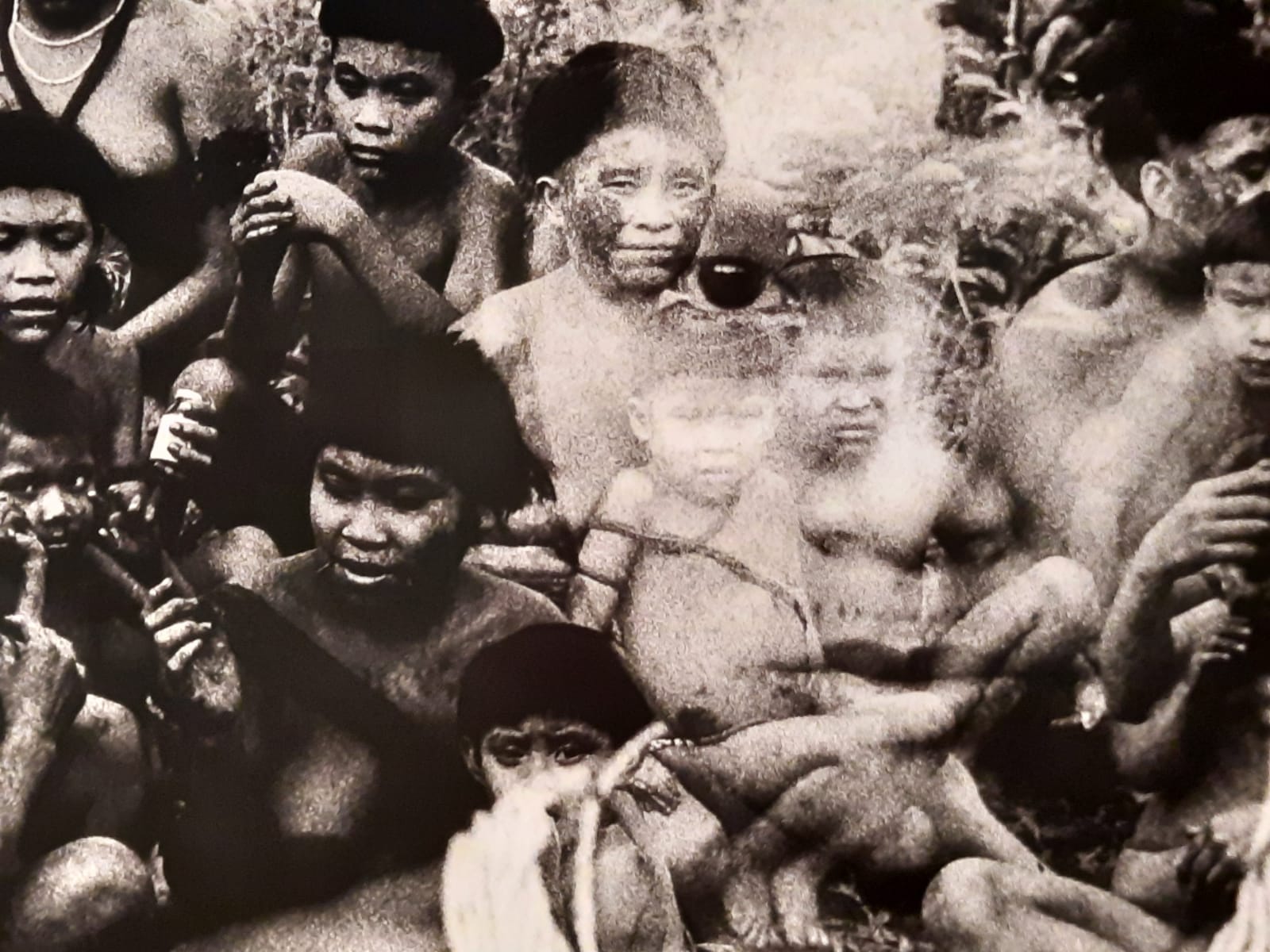
3 thoughts on “Claudia Andujar: The Yanomami Struggle – Barbican, London”